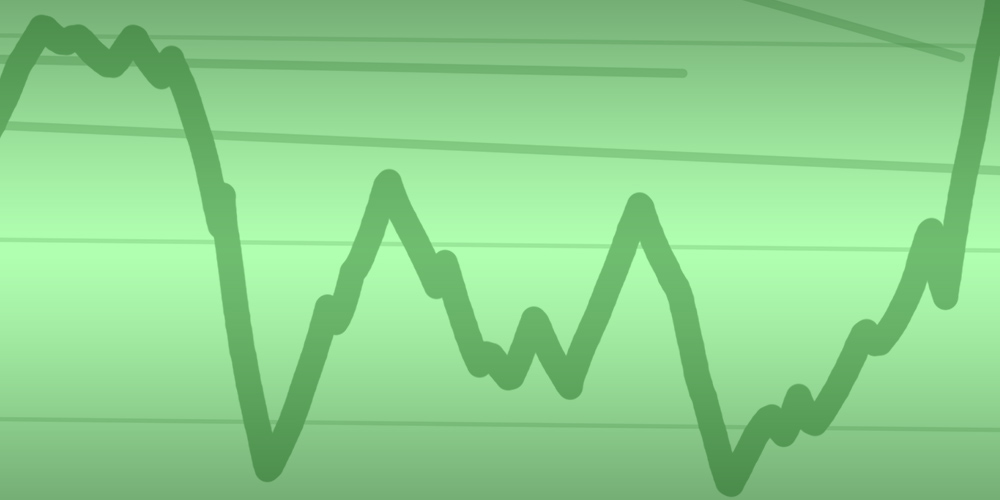Stock investors are bombarded by daily headlines about market ups and downs. Along with market developments, media frequently cites various economic indicators to build a narrative about market developments. It’s a good idea to make yourself as an investor aware of most commonly cited economic indicators. Investors would also benefit to make themselves aware of the choices financial publications make when they choose what indicators to report, how to incorporate those numbers to a wider economic narrative, and ultimately to be able to question themselves, do those indicators matter when it comes to investing?
Here be biases
Economic news are often focused on negative developments, highlighting potential threats to economy. For journalists, negative developments are easy to write about and they easily catch the investing publics attention. However, because of this negative bias, news often are not helpful when it comes to trying to guess where markets are headed. Very often these risk narratives do not materialise at all. If you believe in a narrative and sold your stocks in anticipation of fulfilment of that narrative, you’ll miss out any gains when risks fail to materialise and markets keep climbing.
Ideal indicators
Investors interested in keeping up-to-date with full economic picture would therefore like to have 1) economic indicators which are leading in nature, meaning they anticipate economic developments well ahead. Also, depending on investor’s holdings, it would be useful to have indicators 2) which accurately capture all regions owned companies operate on. This means that it’s often not helpful to look at indicators which focus on country, or continent level data, when a company you’re interested on gains their revenue from world wide operations. This is usually the case with biggest companies on developed countries’ indexes.
While there are many leading indicators aspiring economists or investors can monitor, many indicators also exhibit a bias, or are simply not very helpful when it comes to being a good proxy for wider economy. An ideal leading indicator therefore 3) combines several different indicators into one, aggregated measure to capture the economic big picture.
Fisherian view to economic forecasting
Ken Fisher, from Fisher Investments, has written about Global Business Cycle Indicators by The Conference Board and their US LEI being the best single indicator for economy. Fisher also recommends looking at monthly PMI (Purchasing Managers Index) surveys for additional guidance.1
To fulfil the second requirement above about global coverage, it’s important to not look at one country numbers, but instead try to get a GDP-weighted picture of the global economy. For this requirement, combining numbers of biggest markets like US, eurozone, China, Japan, and UK, provides a good proxy for global economy.
How an average investor can benefit from accurate leading indicators
If market timing is your thing, you’ll naturally be interested to know where markets are headed. Stocks are usually a leading indicator themselves, but to know if stock market movements represent a true change of sentiment, or are just random walk, is very much impossible just by looking at price action itself. Leading indicators can provide investors with a better understanding of market dynamics. If markets are going down, but leading indicators indicate expanding economy, that usually means a good buying opportunity is at hand. And vice versa, if markets are climbing but indicators indicate a cooling economy, it might be a good idea to sell a part of your holdings.
Market timing is not for everyone however, and for most investors it usually pays to avoid it altogether. For “buy and hold” investors, leading indicators can help them to avoid buying at market top (market cycle top). Market tops are usually coincided with leading indicator tops, so taking a look at the leading indicators before you buy helps to avoid making buys in economic environment that is just about to turn for worse. In those occasions, waiting until leading indicators again indicate an expanding economy would help you to buy sometimes significantly cheaper stocks.
Salkku World Economic Outlook
Since I’m interested about getting an accurate picture of the world economy myself, I combined these indicators into a tool of my own. Based on that tool, I’ve decided to start to publish a series of posts about the global economic outlook periodically here at Salkku blog, at the start of every quarter.
References
-
Ken Fisher. Still worried about where stocks are headed? Look at these indexes for hope. USA Today. https://eu.usatoday.com/story/money/columnist/2019/01/13/dow-stock-market-worries-look-at-these-indexes/2547360002/. Downloaded 2019-11-08. ↩
